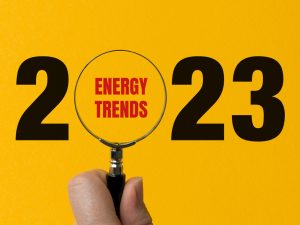3 Energy Trends to Watch in 2023
 The energy industry is always changing. By staying up to date on the latest technologies, you’ll be better prepared to manage your energy costs, upgrade equipment performance and improve your operations. Here are some of the latest energy trends that you should be looking at.
The energy industry is always changing. By staying up to date on the latest technologies, you’ll be better prepared to manage your energy costs, upgrade equipment performance and improve your operations. Here are some of the latest energy trends that you should be looking at.
Electric vehicle chargers get a lift
The federal tax credit for electric vehicle charging infrastructure expired at the end of 2021. The Inflation Reduction Act of 2022 brought them back and made them better than ever. Now, businesses installing charging infrastructure may be eligible for a tax credit of 30% of the installed costs, subject to a limit of $100,000. That’s a big expansion over the previous credit, which topped out at $30,000. Also, beginning in 2023, technology like bi-directional chargers will also qualify.
Electric fleet vehicles are coming along for the ride as well. Commercial electric vehicles purchased between now and 2032 may be eligible for a tax credit covering 30% of the purchase price. A maximum credit of $7,500 is available for vehicles up to 14,000 pounds. For vehicles over 14,000 pounds, the maximum is $40,000. There’s never been a better year to electrify your transportation.
Increased focus on indoor air quality
Indoor air quality (IAQ) has always been important, but workers and building occupants are focusing on it more than ever before. Honeywell polled 3,000 office building workers across the United States and other countries and found that 82% of those surveyed are more concerned about indoor air quality (IAQ) because of COVID-19. Fellowes Brands surveyed more than 1,100 American workers and found that 88% believe clean indoor air should be a right for all employees.
As these results make clear, building occupants expect a clean and healthy indoor environment. This can have significant consequences for energy consumption, as HVAC systems are typically the largest energy consumer in commercial buildings. Facility managers must learn to balance ventilation, temperature and humidity controls to ensure good IAQ while managing energy use. Air filtration and air scrubbing techniques can also play a central role in improving overall indoor health.
Smart buildings surge
The number of smart buildings globally is expected to increase from 45 million in 2022 to 115 million in 2026, according to Juniper Research, an increase of more than 150%.
More than half of all smart buildings use some form of connected HVAC, according to IoT Analytics. Air quality monitoring is another widely used application in smart deployments, at 48%. Demand for this has grown in the wake of the COVID-19 pandemic.
Despite the growth in smart building technology, there are still challenges to overcome. These include building awareness of energy-saving opportunities and standardizing protocols to better validate and communicate energy data. Training is necessary to educate staff on how to implement and operate these advanced systems, and there are security and privacy concerns to overcome.
Change can happen quickly, and it’s easy to miss out. Keep your eyes open for these and other energy trends in 2023 and beyond. If your facility may be due for renovations in 2023, contact your local electric cooperative to learn more about what Power Moves® rebates may be available to support your project.